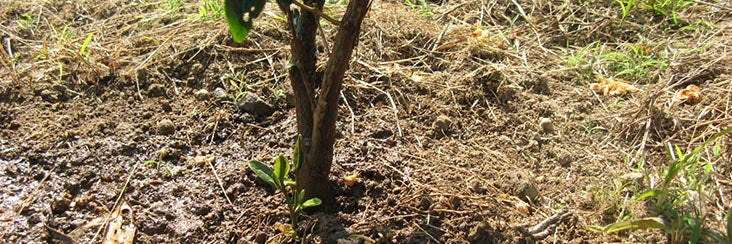
Seasonal Shifts And Their Effects On Our Brew

This post was originally written in response to the following question put to us by our friends at Tching. Click here to visit their rich and informative blog about all things tea.
The challenges of farming tea are similar to farm challenges everywhere, but how do those variables affect the brew in my cup?
Tea farming, like all agriculture – depends directly on the environmental and seasonal conditions of a given place and time. This is something that tends to go unacknowledged in our modern global supermarket age. We may hear about regional irregularities that make a certain commodity more or less dear in a given season, but we blithely go on about our business, relatively unaffected by seasonal shifts. On the other hand, tea connoisseurs, merchants, and most acutely farmers – pay close attention these conditions, along with their effects.
Seasonal conditions, and even daily weather can more or less make or break a crop or at least a day’s harvest of tea. While many of the daily weather conditions can be overcome by modern indoor climate control during the processing of tea leaves, they still have a significant effect. Traditional tea factories do not use indoor climate control, and simply work with the daily conditions, relying on their experience as their resource.
Starting with the bigger factors and moving on to some of the more subtle influences, we’ll take a look at how these variables result in different characteristics in our daily brew of Oolong Tea from Taiwan.
Virtually all high elevation tea farms in Taiwan have no systemic irrigation. They rely on rain and fog for water. So when there is no rain for any significant amount of time, new leaves do not grow. This was the case early in the growing season last winter. It was unseasonably cold and dry for the first half of the season, then rained, then stopped, then got warm late in the season. This produced a very scarce crop that grew somewhat erratically, with long stems that grew when the plants finally had water and warmth later in the season.
For low elevation farms this is much less of an issue since most have irrigation and relatively warmer temperatures. So, second to water – cold temperatures can stunt growth of new leaves. These two factors have the most obvious impact on a growing season – as they directly affect the amount of yield.
On the opposite side of the spectrum, too much rain during the growing season will produce a weaker, less substantial brew from these harvested leaves. If the rain is consistent for long enough, it can damage the root systems of the tea plants. In this case, even if there is clear weather approaching harvest time, the leaves will lack the essential ingredients that give it character in its composition. When the weather is too hot, it tends to result in a more astringent brew – making the tea much more fickle and difficult to brew a balanced composition of astringent, bitter, and sweet qualities.

Beyond the seasonal conditions, let’s consider factors that affect the leaves on the day of harvest. If leaves are picked when they are wet, it is much more difficult for them to oxidize properly, which results in an unbalanced bitter brew. A farmer friend in the Shanlinxi region of central Taiwan recently mentioned that if the conditions are at all wet during harvest, he will process the leaves as a lightly oxidized High Mountain Oolong as opposed to a more heavily oxidized leaf that can be roasted in the style of a Dong Ding Oolong.
When tea leaves are picked on a sunny day, they are easily oxidized in the first stage of processing – solar withering. This results in a more fragrant, complex aroma in the brewed tea. If it is a cloudy day, the leaves will benefit from more shuffling and oxidation time during the indoor withering stage of processing Oolong Tea.
Becoming familiar with tea on this level brings a deeper connection to its source. Remaining aware of seasonal conditions and their effects on the tea that we enjoy daily connects us to the earth and the farmers that produce it. Knowing where your tea comes from and how the changes in weather that affect its quality and character is one aspect of a deeper involvement with tea culture. It grounds us in the reality that the farmers live with day to day and year to year. Each sip of tea that we take can bring us back to the land and the people who provide us with our daily pot of tea. The more we understand and acknowledge these factors, the more aware we are of how each brew is unique and contingent on a complex array of influences.




